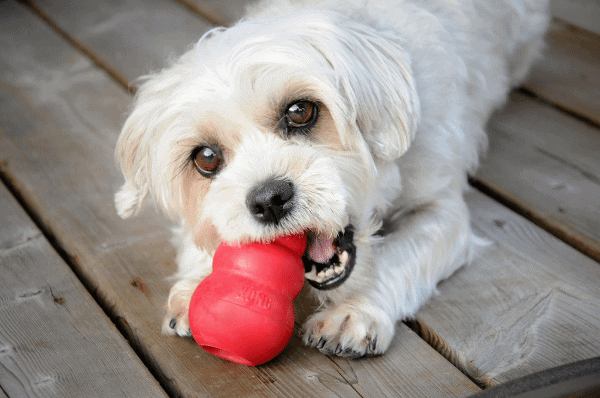Food and Water Bowls
Food and water bowls are an essential part of your dog’s kit. You’ll want to put a bit of thought into what you choose for your dog.
Here are some pros and cons of the 3 most commonly used materials.
• Plastic Bowls. They’re durable and long-lasting. But if you notice your dog gnawing or chewing on the bowls, plastic isn’t your best choice. Ingesting bits of plastic can harm your dog internally. Plastic can also stain and will often develop a biofilm if not scrubbed and cleaned daily.
• Ceramic Bowls. They’re heavy and very stable – a good thing if your dog tends to push its bowl around the floor while eating. But ceramic bowls are also porous and will need to be scrubbed and cleaned daily.
• Stainless Steel Bowls. The #1 choice of vets because they are so easy to clean and sanitise. Stainless steel bowls are also the most durable. Look for bowls with a rubber coating on the bottom to help prevent sliding.
Bowls for fast eaters or those at risk of bloat
In some situations, you need a specialized bowl for your dog. Dogs that are at risk of bloat or gastrointestinal volvulus are typically large deep-chested breeds (like a great dane), but dogs can bloat even if they don’t have the typical conformation. Eating too quickly is one of the risk factors for this devastating condition. Dogs that eat very quickly often don’t feel satisfied and immediately look for more food, so they could also benefit from a bowl that will slow down their eating. You can buy specialized bowls with ridges in them to slow eating, or simply place an upturned bowl on a flat plate, so that your dog eats the food around the outside of the bowl.
Raised or normal feeding height
There is much misinformation out there about how to feed your dog. Unless your dog suffers from megaoesophagus feeding on the floor is fine. Having an elevated feeding bowl does not reduce the risk of bloat in dogs (J Am Vet Med Assoc 2000;217:1492–1499).
Food balls

Another option to slow fast eaters and to keep dogs occupied during periods of absence is using a food ball like a Buster Cube. Your dog needs to work at the ball and roll it around to get the food out. There are also a great number of puzzles you can use to deliver your pet treats and there is no reason you can’t use regular dry food for these, rather than high calorie treats. Kongs are also great to fill with food, whether that be soft or hard foods. For the thrifty and crafty among us you can easily make your own food delivery device with an old plastic drink bottle with the lid removed. If you place some dried food inside your pet can roll the bottle until he gets at the food. Just make sure you don’t do this with a dog that is likely to chew the bottle and ingest pieces of plastic! For smaller dogs you can recycle cardboard toilet paper rolls and simply seal one end with paper and masking tape and put some food inside.
Care of your feeding equipment
Whatever bowl you decide for your pet, make sure you clean the bowls daily and do not leave meat or soft foods out for more than an hour (particularly in warmer climates or outside where there are flies). Wash and scrub the bowls with normal dishwashing detergent and rinse well. Many are safe for the dishwasher too, and having more than one water and food bowl means you can rotate them as one set is being washed. Having multiple bowls in different locations and a constant source of fresh drinking water is also important for your pet.
We hope this guide has helped you make an informed choice on the best type of bowl to choose for your pet. This important purchase should be durable and functional, as well as being safe for your pet.
The post Food and Water Bowls appeared first on VetBabble.





Post a Comment